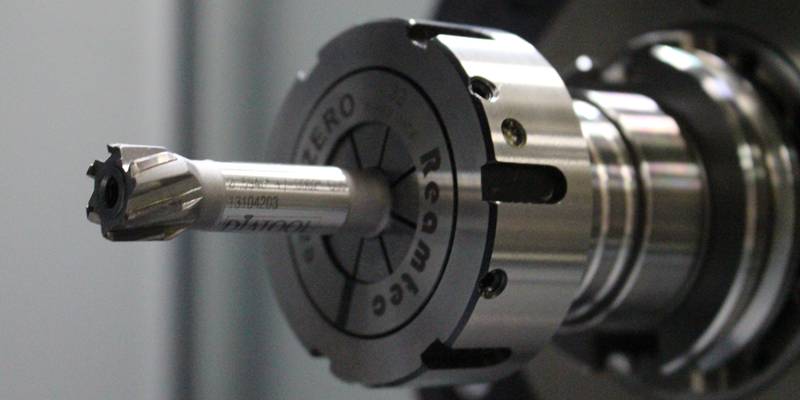- November 25, 2022
Finishing operations are crucial to the quality and functionality of machined components. Reaming, as one of the finishing processes, ensures that the holes in your workpiece have the best diameter accuracy, dimensional tolerance, and superior surface finish. Usually, manufacturers use it after drilling processes have been completed.
What is reaming? What are its purposes? How can you get the best from the reaming process? This article answers these questions, discussing the CNC reaming process extensively, including problems associated with it and tips to achieve the best result.
What is Reaming?
Reaming is a cutting operation that involves enlarging existing hole diameters more accurately and enhancing the surface finish of the hole’s walls. The reaming tool used for the reaming operation is called “Reamer.” This process is a finishing operation and does not cut much material compared to boring or drilling. In addition, the hole reamer spins at precisely half RPM of the drilling operation when machining the workpiece.
What is the Purpose of Reaming?
The primary purpose of reaming holes in a workpiece is to improve its dimensional accuracy, surface quality, and tolerance level. Manufacturers adopt reamer machining because it is the best option due to its speed and low cost. CNC reaming can offer a better surface finish with its precision grinding capabilities, creating holes of specific sizes and accurate diameters.
Processes such as drilling and boring come before reaming metal as they must prepare the hole before reaming. A hole reamer is an ideal choice to consider whenever you need to hold tolerances tighter precisely -/+ 0.002″ or more on the hole diameter.
How To Ream A Hole: A Stepwise Guide
To get the best results from this precision machining, you must prepare your holes with the right amount of stock for the reamer to cut. The reamer rubs the hole leaving the diameter smaller than required if the stock is too small. However, if the stock is too much, the hole may become oversized and have a rough surface finish.
Here are a few steps on how to ream a hole:
Step 1: Ensure the workpiece is stationary and fasten it with clamps so it won’t slide or rock. Ream the hole with the right reamer size. Typically, the reamer is 1.5 times larger than the hole.
Step 2: Identify and spot-drill the hole in the workpiece using a spot drill with a slightly larger taper than the drill used in making the existing hole. However, don’t drill with a center drill to get desirable results.
Step 3: A good rule of thumb that helps to determine the best drill size is to minus 2% – 4% from the reamer’s size – minus 2% for harder metals and 4% for softer materials.
Step 4: Apply the proper feed and speed for the material, reaming tool, and operation. However, ensure that the drill and hole are well lubricated with coolant or cutting oil during CNC reaming operations.
Step 5: Control the feed and speed of the reamer
- Rotation Per Movement (RPM): Use 1/2 – 2/3 the speed used in drilling the hole;
- Feed: Use twice the feed of the drill used
Step 6: File the top of the hole using a 90º or 82 º countersink to break the edge.
Step 7: Use lighter cutting oil or coolant for lubrication since reaming operations do not necessarily need heavy cutting fluids for high performance. It allows you to create an accurate size and a smooth finish for the hole’s walls.
Step 8: Avoid stopping the reamer during operation or pecking the hole’s walls with the reamer till it comes out through the bottom of the hole. Pull the reamer straight out of the drilled hole when the machine is off and the spindle has stopped working.
Different Types of Reamers
The common types of reamers include the following:
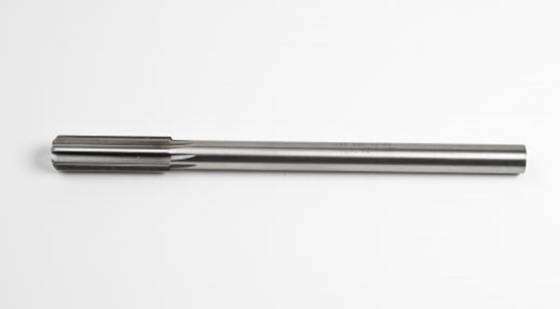
1. Hand Reamer
Hand reamers are categorized as rose or fluted reamers, which have a tiny taper on the cutting end to ease the entry of the reamer. These reamers can be solid or extensible. However, its enlargement is restricted to a specific level. In addition, the hand reamer has irregularly placed blades around its body so as to minimize the possibility of chattering.
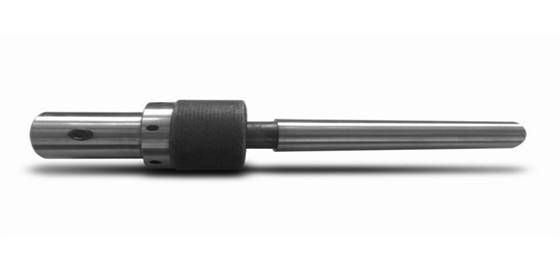
2. Floating Reamers
These reamers can correct erroneous alignment between the already drilled hole and the axis of the reaming tool. Floating reamers have two replaceable and modifiable cutting edges, which are held together in one slot of the reamer and permitted to float in the radial direction. These reamers are specifically suitable for rotary workpieces on turret lathes.
3. Shell Reamers
Shell reamers are used with shell reamer arbors, which gives the hole in the reamer the best fitting. These reamers are designed specially to free-cut material and well-finished reamed holes to the preferred size.
They are used in screw machines, drill presses, automatic screw machines, lathes, and more. Shell reamers are a cost-effective option for your large-hole reaming operations.
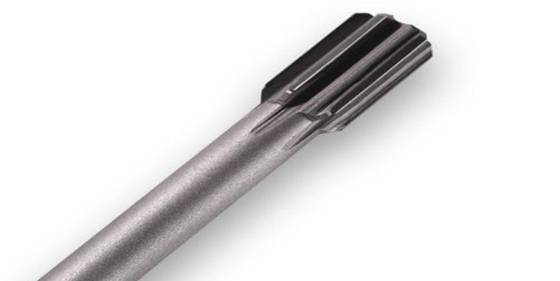
4. Carbide Reamers
Carbide reamers are ideal for machining regions with high abrasion resistance, giving the reamer a longer tool life while the hole gets an excellent finish. Solid carbide reamers produce a flawless hole around their axis instead of wasting time on the previously drilled hole.
Common Problems that Occur During Reaming
Several complications occur when trying to ream a hole in a workpiece. Amongst them are:
1. The reamer produces undersized Bell-mouth or oversized holes because of misalignment and incorrect feed and speed.
2. The reamer may seize and break due to high surface roughness, inappropriate tool material, or a shortage in the flow of cutting fluid to the cutting area.
3. The reamer may compromise the surface finish of the hole due to unequal chamfers, chatter, excessive spindle run-out, or insufficient cutting action.
4. Excessive tool wear or breakage due to misalignment or extreme reaming pressure occurs.
Tips and Precautions for Reaming Operations
There are some helpful tips and precautions to consider when performing reaming to have a successful operation. Here are some of them:
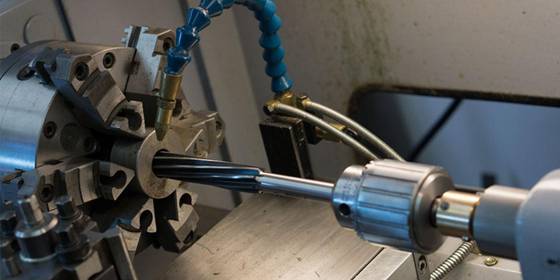
1. Reamer Feeds and Speeds
The feeds and speeds for reamer machining may vary significantly depending on the material that needs CNC reaming, the machine type, and the required finish and accuracy. Generally, most machine reaming is performed at approximately two-thirds of the feeds and speeds used for drilling holes in the same material.
The feeds involved in reaming metal are typically higher than those used for drilling, and it often runs 200% to 300% of drill feeds. Excessive reamer wear may occur as a result of too low feed. As a result, the feeds must be high enough to allow the reaming tool to cut at all times instead of rubbing or burnishing.
2. Alignment
The perfect alignment of the spindle, bushing, reamer, and hole to be reamed is crucial to the reaming operation. The helix angle should also be properly coordinated to be in line with the other parameters. Any variation has a high tendency to increase reamer wear and deflection in the accuracy of the hole.
Meanwhile, oversized, tapered, or bell-mouthed holes require you to check these parameters’ alignment. Sometimes errors due to misalignment can be minimized using adjustable holders.
3. Reamer Regrinding
One of the principles of cutting tools is to ensure that a tool doesn’t get too dull before it is replaced or sharpened. It would help to regrind the chamfer on a reamer before it gets worn or fails to cut.
However, the sharpening is limited to the chamfer or entering taper alone. You must be very careful to sharpen each flute evenly, or the tool is prone to cut oversize. It is not advisable to sharpen the chamfer using the hand as it is challenging to maintain even cutting edges.
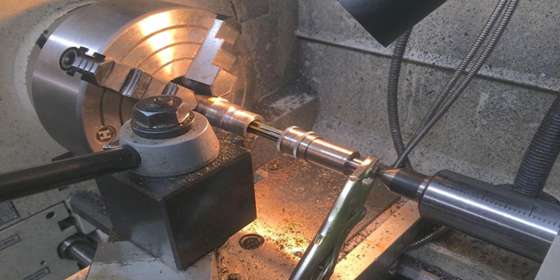
4. Focus on Stock Allowance
The stock allowance for reamer machining includes .010″ on a ¼” hole, .015″ on a ½” hole, and up to .025″ on a 1½” hole. On the other hand, hand-reaming has a much smaller stock allowance, and it is due to the difficulty in pushing the reamer through huge stock. Hence, a standard allowance for a hand reamer is .001″ to .003″.
5. Avoid Chatter
The chatter in reaming operations harms the finish of the hole and the reamer working on it. The chatter may occur due to a lack of rigidity in the machine, excess clearance on the reamer, excessive overhang of the reamer, and too light a feed. To minimize or avoid chattering during a reaming operation, lower the cutting speed and increase the feed rate.
How to Determine the Size of Ream Hole?
Reaming is an efficient and faster way of finishing a hole compared to processes like boring. However, one essential thing to consider when you ream a hole is the size of the hole. If you make the hole too large, it would be difficult for the reamer to do its job. Likewise, making the hole too small doesn’t work You must drill the hole you want to ream to the right size to get the best results.
Generally, the rule of thumb is to retain 0.010″ to 0.015″ material after the drilling operation for the reamer to scrape. Small diameters like 1/32″ or less should have 0.003″ to 0.006″ of material to extract through CNC reaming.
However, using a percentage instead of a fixed range would be best. It would help if you made the diameter of the hole 2% to 3% smaller than that of the reamer. You can modify the diameter of the hole to be 5% smaller than the reamer’s diameter if the conditions are favorable.
Reaming vs. Boring vs. Drilling: What Are the Differences?
The reaming, boring, and drilling processes are different machining operations that either help create a new hole or modify an existing hole in a workpiece using various cutting tools. However, to understand the differences between reaming vs. boring and reaming vs. drilling, we will have to discuss these processes in isolation.
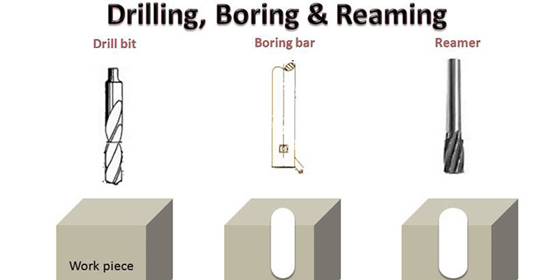
Reaming
As discussed earlier, CNC reaming is a cutting process that uses a rotary cutter to create or modify existing holes with smooth interior walls in a workpiece. However, reaming requires an existing hole prepared by the drilling process.
Usually, the rotary cutter used in reaming operations is known as a reamer, and it extracts significantly less material from a workpiece than the drill bits used in drilling operations.
The primary function of the reamer/reaming operation is to give the existing hole smooth walls. Manufacturers perform reaming operations using a drill press or milling machine. The size tolerance of reaming metal is approximately IT9⁓IT6, while the surface roughness value can get to Ra 3.2⁓0.2µm.
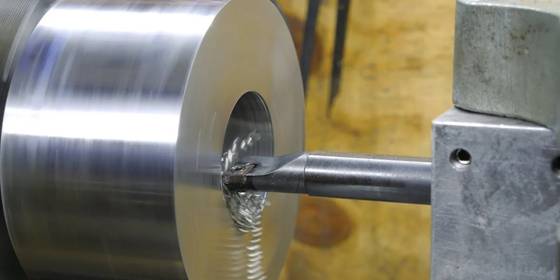
Boring
It is a cutting process that uses a single-point cutter or boring head to widen an existing hole in a workpiece. Boring operation differs entirely from drilling, which involves making a new or initial hole in a workpiece.
Using a milling machine, lathe, or a horizontal boring mill, you can bore a hole. Although drilling creates an initial hole in a workpiece, boring operation helps to enlarge the holes created. The tool size does not limit the boring hole diameter. The boring machining process has a substantial error-correction ability and high positioning accuracy.
Multiple cutting can correct deviation errors of the original hole axis, and the boring process can create different holes with different sizes and accuracy. The boring precision is IT9⁓IT7, while surface roughness ranges from Ra 3.2⁓0.8µm.
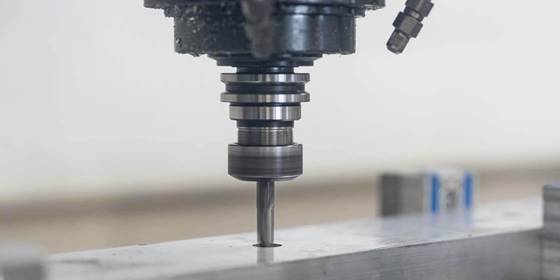
Drilling
CNC drilling is a typical process that creates circular-shaped holes in workpieces using a drill bit. A machinist must press the drill bit against the workpiece to drill a hole. The drill bit drills its way into the workpiece creating a circular-shaped hole when the drill is activated.
Drilling creates the conditions for forming a threaded hole. It allows a standard hole to be drilled in harder materials such as metal, in preparation for subsequent hole processing. Therefore, drilling accuracy is lower than boring and reaming, only IT13⁓IT11, while it has a high surface roughness of Ra 50⁓12.5µm.
In conclusion, the main difference between these three processes is clear enough. Reaming creates a fine interior wall within existing holes, boring increases its diameter, while drilling creates the hole in the workpiece.
When to Choose Reaming over Boring?
Reaming and boring are ideal finishing techniques that help to create holes with accurate diameters and tighter tolerance. Nevertheless, there are certain factors that may necessitate choosing to ream over boring. Here are some of them:
1. Reaming Saves Time
A reamer has a multipoint cutting tool with up to 10 teeth depending on its size. It reduces cycle time, and its multiple teeth offer you much faster feed rates, thereby increasing productivity compared to machining with a single tooth. As a result, CNC reaming is a better option than boring when time is a primary factor.
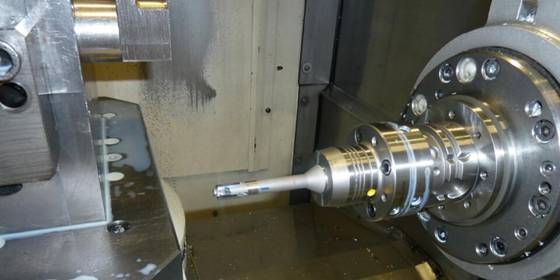
2. Straightforward Process
Reaming is your best option for a straightforward hole machining process. It is pretty easy to set the reamer for high-performance reaming operations. The reaming tool does not need continuous diameter adjustment as the tool has a correct preset diameter. The reaming process is more stable and secure than the single-point boring, which requires constant adjusting.
3. Improved Quality
Reaming offers better quality than boring because of its multiple cutting edges. Using a reamer, you can achieve the tightest tolerances with higher speeds and feed rates. The multiple cutting tools of the reamer not only save time but also create superior-quality parts.
Get A Perfect Hole Machining Service
Hole machining is necessary and prudent for some machined parts. However, creating a precise and perfect hole is a challenge. This problem will be solved at WayKen.
With over 20 years of experience in machining, we can handle all types of holes, such as reaming, drilling, boring, or tapping holes. You can be assured of getting a high-quality hole machined part.
If you have a project that requires the machining of holes, contact WayKen today and we will provide effective solutions and competitive prices for you.
Conclusion
Reaming is one of the standard finishing techniques best fit for machining holes on your workpiece. It is an economical and practical processing method for smaller holes. Nevertheless, to get the best result from your reaming operations, it would help to pay more attention to using the right reamers with the proper helix angle.
FAQs
What are the applications of the reaming process?
The reaming process is commonly used to remove burrs and basic enlargement of holes while giving a quality finish with precise dimensions.
What causes the reamer to chatter?
The reamer chatters due to a lack of rigidity in the machine or bushing. Also, it occurs due to feeds that are too light, insecure holding of the workpiece, or excessive overhang of the reamer.
What are the advantages of reaming?
Higher feed rate and improved bore accuracies are advantages of reaming. Likewise, high-speed reaming helps to enhance bore finishing, giving the hole a better surface finish.

